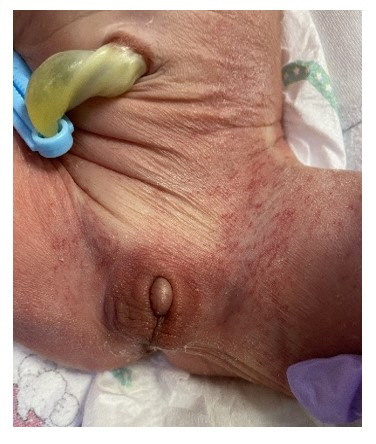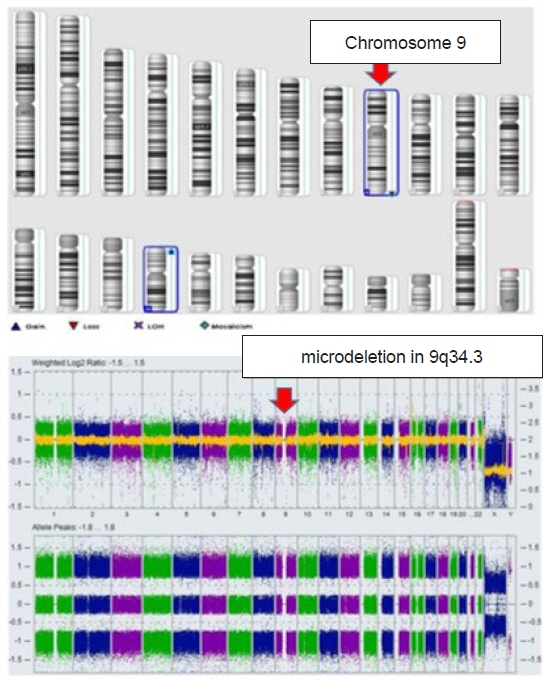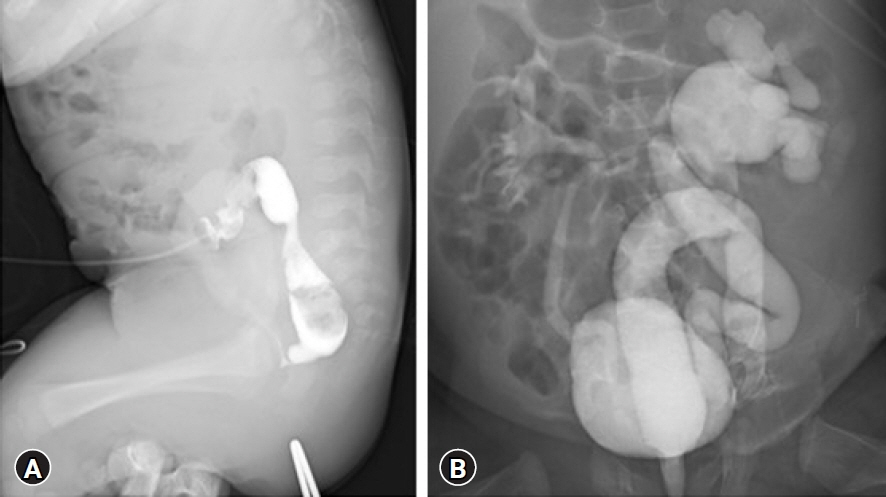Child Kidney Dis.
2022 Dec;26(2):111-115. 10.3339/ckd.22.039.
Kleefstra syndrome combined with vesicoureteral reflux and rectourethral fistula: a case report and literature review
- Affiliations
-
- 1Department of Pediatrics, School of Medicine, Kyungpook National University, Daegu, Republic of Korea
- 2Department of Pediatric Surgery, School of Medicine, Kyungpook National University, Daegu, Republic of Korea
- 3Department of Urology, School of Medicine, Kyungpook National University, Daegu, Republic of Korea
- 4Department of Radiology, School of Medicine, Kyungpook National University, Daegu, Republic of Korea
- 5Department of Nuclear Medicine, School of Medicine, Kyungpook National University, Daegu, Republic of Korea
- KMID: 2538744
- DOI: http://doi.org/10.3339/ckd.22.039
Abstract
- Kleefstra syndrome is a rare genetic disease characterized by mental retardation, hypotonia, and a characteristic facial appearance. Furthermore, in some cases, Kleefstra syndrome is associated with various anorectal and genitourinary complications, including imperforated anus, vesicoureteral reflux, hydronephrosis, and chronic kidney disease. Herein, we present a case of Kleefstra syndrome with recurrent urinary tract infections associated with vesicoureteral reflux and rectourethral fistula, which was treated by a multidisciplinary approach.
Keyword
Figure
Reference
-
References
1. Kleefstra T, van Zelst-Stams WA, Nillesen WM, Cormier-Daire V, Houge G, Foulds N, et al. Further clinical and molecular delineation of the 9q subtelomeric deletion syndrome supports a major contribution of EHMT1 haploinsufficiency to the core phenotype. J Med Genet. 2009; 46:598–606.
Article2. Stewart DR, Kleefstra T. The chromosome 9q subtelomere deletion syndrome. Am J Med Genet C Semin Med Genet. 2007; 145C:383–9.
Article3. Byeon JH, Shin E, Kim GH, Lee K, Hong YS, Lee JW, et al. Application of array-based comparative genomic hybridization to pediatric neurologic diseases. Yonsei Med J. 2014; 55:30–6.
Article4. Lee J, Park JE, Lee C, Kim AR, Kim BJ, Park WY, et al. Genomic analysis of Korean patient with microcephaly. Front Genet. 2021; 11:543528.
Article5. Lee JS, Hwang H, Kim SY, Kim KJ, Choi JS, Woo MJ, et al. Chromosomal microarray with clinical diagnostic utility in children with developmental delay or intellectual disability. Ann Lab Med. 2018; 38:473–80.
Article6. Sanchez S, Ricca R, Joyner B, Waldhausen JH. Vesicoureteral reflux and febrile urinary tract infections in anorectal malformations: a retrospective review. J Pediatr Surg. 2014; 49:91–4.
Article7. van der Steeg HJ, Botden SM, Sloots CE, van der Steeg AF, Broens PM, van Heurn LW, et al. Outcome in anorectal malformation type rectovesical fistula: a nationwide cohort study in The Netherlands. J Pediatr Surg. 2016; 51:1229–33.
Article




